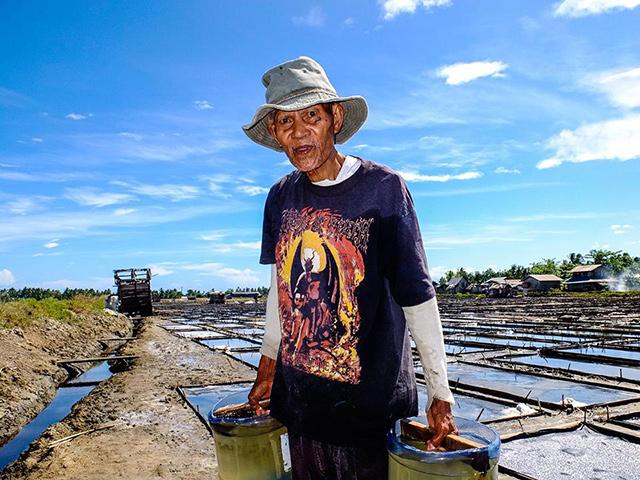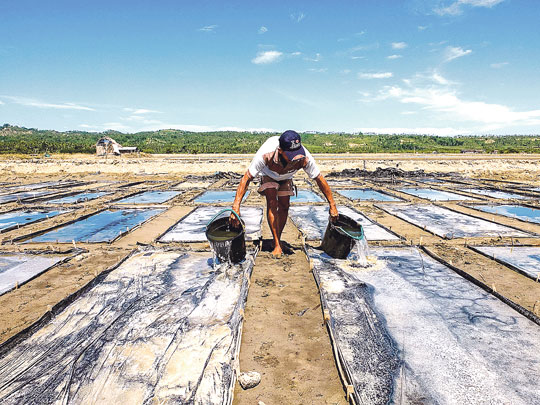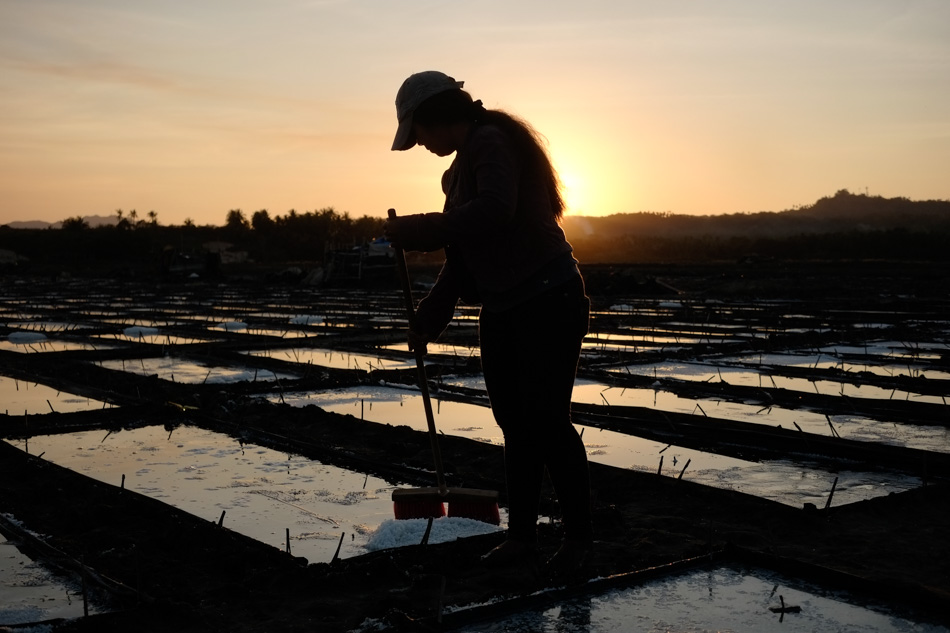

A worker pours sea water into a traditional salt flat in Alubijid.
Solar Evaporation
Solar evaporation is probably one of the earliest methods used to produce salt. According to that process, sea water or natural brine evaporates up to the saturation point in open basins, thanks to the action of the sun and wind. Crystallization occurs in dedicated open basins as well, where the saturated brine is finally poured. Once the salt crust is formed, the exceeding water is eliminated before harvest. The raw salt may be further processed, including washing, drying, sifting and grading, if necessary and depending upon the requirements.

“A woman farmer scrapes her ready-to-harvest sea salt on a framed platform at Alubijid, Misamis Oriental on Sunday. The predicted dry season, intensified by the El Niño phenomenon this 2016, is expected to boost sea-salt harvest this coming summer.” (Source)
INTEGRATED SOLAR SALT PROJECT PROFILE (pdf)
| Website: | no website found |
| Facebook: | no page found |
| Email: | no email found |
| Landline: | no number found |
| Mobile: | no number found |
| Municipal: | Alubijid |
| Barangay: | Baybay |
| Address: | no street address found |
| Google Map: | Solar Salt Production |